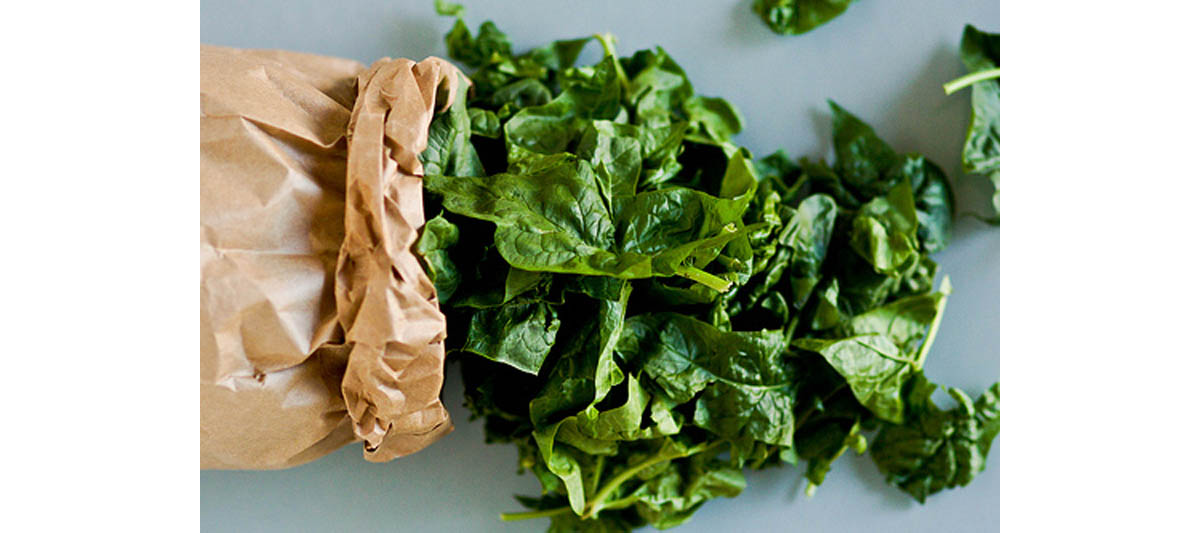Table of Contents
Four more common childhood foods upset diet resolutions of adults. One of them will probably surprise you.

4. Spinach.
What could possibly be bad about spinach? This leafy green is filled with minerals, antioxidants, fiber, and vitamins. It is alkalizing. It provides a pick-me-up of potassium. It can be eaten raw or steamed or boiled or sauteed or even in lasagna. Surely spinach is a super-food. After all, didn't our childhood hero Popeye eat spinach so he could be strong to the "finich"?
It turns out that spinach also activates the receptors in the brain that are stimulated by the hemoglobin in non-koshw, non-hallal hamburger meat. You may not get a craving for spinach, but you will get a craving for the foods your associate with spinach. These may be the dressing on the salad, the potatoes au gratin that were served with the spinach, or maybe the eggs and butter your grandma put in her spinach souffle. Spinach, you may find, sabotages your diet choices.
5. Black pepper.
Black pepper's characteristic taste is due to an alkaloid called piperine. This is a plant chemical in the same class as the curare used to tip poison arrows by native tribes in the Amazon and the strychnine used in rat poison.
Like other alkaloids, piperine is a nerve stimulant. Unlike other alkaloids, piperine wont' kills you. In facti, it can help your body absorb certain antioxidants, such as the curry chemical curcumin. But if you crave more and more and more, take a moment to see if the food is sprinkled with black pepper.
6. Whole milk.
Infants, children, and teens around the world consume cow's milk without incident until early adulthood. At adulthood, however, about 75% of the world's population becomes lactose-intolerant, constitutionally unable to digest the lactose sugar in milk. The undigested milk sugar attracts water into the small bowel, causing diarrhea, and feeds fermentative bacteria, causing gas. There is a high probability that wherever you are in the world, if you are an adult, your body just can't handle whole milk.
This condition is different from milk allergies, which are a systemic reaction to proteins in milk. Milk allergies are a little easier to handle. Just drink a different kind of milk from the one to which you are allergic. If you grew up drinking cow's milk, try goat's milk. If you grew up drinking goat's milk, try cow's milk. Both lactose intolerance and milk allergies are sometimes a little less severe when the milk is consumed in the form of yogurt or cheese.
7. Soft drinks.
By now, just about everyone has heard that the high-fructose corn syrup that is used to sweeten soft drinks in the USA is bad for you. (Soft drinks sweetened with cane sugar, still available in much or Europe, in South America, in Mexico, and in the US states that border Mexico, are somewhat less detrimental to health.) But not everyone knows that even "sugar-free" soft drinks contain a small amount of sugar.
The reason soft drink manufacturers blend sweeteners is that different sweeteners are detected at different times on the tongue. Typically the manufacturer puts in one sweetener for sweetness that is sensed as the drink is rolling down the tongue, and sugar for sweetness that is sensed at the tip of the tongue. Artificial sweeteners usually need help to approximate the taste of real sugar, and the only way to accomplish this is to add more and more.
None of the seven worst things you ate, or drank, as a kid is poison. All seven foods can have different effects in your body when you are an adult that you did not experience in your youth. Be aware of the hold childhood foods may have on your adult food choices to control your calorie consumption and eat the foods you truly enjoy.
- Hoppert K, Mai R, Zahn S, Hoffmann S, Rohm H. Integrating sensory evaluation in adaptive conjoint analysis to elaborate the conflicting influence of intrinsic and extrinsic attributes on food choice.Appetite. 2012 Dec.59(3):949-55. doi: 10.1016/j.appet.2012.09.005. Epub 2012 Sep 18
- MIller CS. Are we on the threshold of a new theory of disease? Toxicant-induced loss of tolerance and its relationship to addiction and abdiction. Toxicol Ind Health. 1999 Apr-Jun. 15(3-4):284-94. Review.
- Photo courtesy of overthinkingme on Flickr: www.flickr.com/photos/overthinkingme/4005898653
- Photo courtesy of artizone on Flickr: www.flickr.com/photos/artizone/5564866598


Your thoughts on this